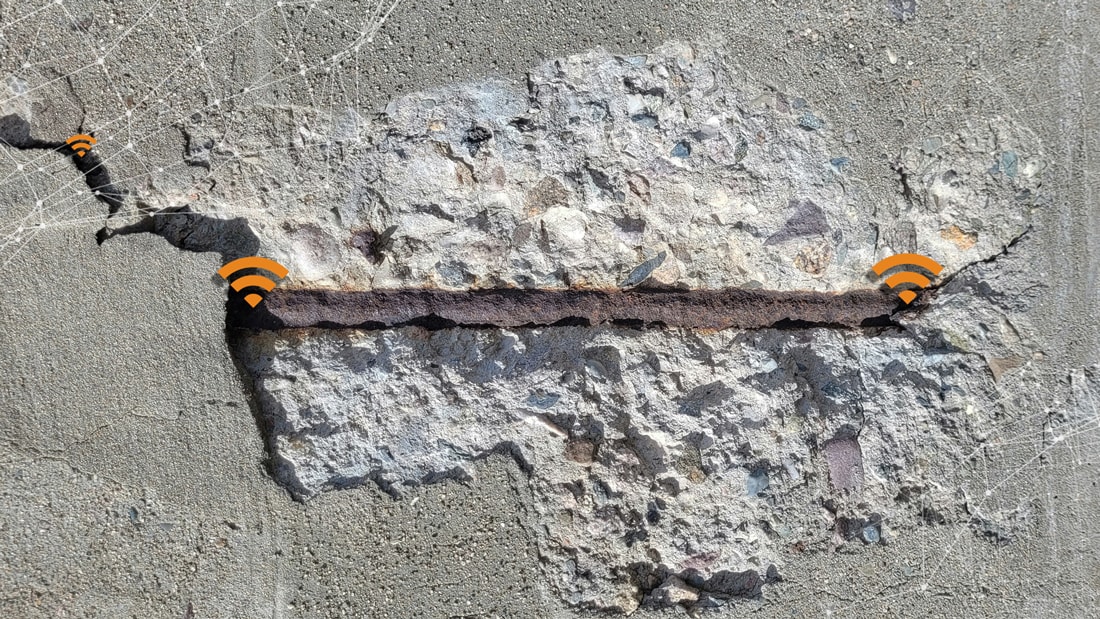Don’t Miss the Opportunity: Deploying Asset Health Monitoring in Structural Repairs
As ageing infrastructure reaches or exceeds its design life, asset owners face critical decisions. Repairs are necessary to maintain functionality and safety, but these interventions also present a unique opportunity to deploy asset health monitoring systems that provide long-term value. By integrating monitoring as part of repairs, asset owners can ensure structural longevity, optimize maintenance budgets, and validate the effectiveness of repair methodologies.
ACI 562-19, the Code for Assessment, Repair, and Rehabilitation of Existing Concrete Structures, provides a framework for evaluating and restoring structures. More importantly, it underscores the importance of durability, performance validation, and long-term integrity—all of which align seamlessly with structural health monitoring. Below, we explore three key reasons why integrating health monitoring with repairs is an essential best practice.
1. Integrity Assurance for Continued Operation
For asset owners managing infrastructure that is operated beyond its original design life, the integrity of repairs is paramount. ACI 562-19 mandates that repairs must ensure the durability of the structure as a whole is considered and measures are adopted for its assurance.
- Repairs must not only address current damage but also ensure that the structure can withstand future environmental and load conditions
- Continuous health monitoring provides real-time assurance that repairs are performing as intended, minimizing risks associated with extended operation.
2. Early Detection Enables Early Intervention
Structural deterioration often starts long before visible signs appear. By the time cracks, corrosion, or structural weaknesses are apparent, costly and extensive repairs may be unavoidable. Health monitoring systems provide early warning signals, allowing asset owners to intervene before minor issues escalate into structural failures.
ACI 562-19 highlights this principle:
- “Maintenance and frequent preventative approaches that occur early in the service life of the structure generally result in improved service life with less interruption and a lower life-cycle cost.” (ACI 562-19, Section 8.1.3)
- By implementing continuous monitoring, owners can track performance trends, detect anomalies, and plan maintenance proactively.
- Early intervention reduces unexpected repair costs, extends asset service life, and enhances operational reliability.
3. Validating Repair Methodologies for Performance and Competitive Advantage
For specialist concrete repair consultants, contractors and material suppliers, proving the long-term success of their repair applications is crucial to differentiating their expertise from competitors. ACI 562-19 places significant emphasis on ensuring that repair methodologies are validated and that repair materials interact effectively with the existing structure:
- Monitoring post-repair conditions allows specialists to collect performance data, creating field-proven case studies that demonstrate the effectiveness and durability of their solutions.
- Asset owners gain confidence in repairs that are data-validated, ensuring compliance with performance-based standards and durability requirements.
The Future of Repairs: Proactive, Data-Driven Asset Management
ACI 562-19 provides a robust framework for structural repair and durability assurance, but asset owners and repair specialists can go further. By integrating IoT-based structural health monitoring, stakeholders can move from reactive repairs to predictive maintenance, leading to:
- Reduced lifecycle costs
- Minimized operational disruptions
- Enhanced safety and compliance
- Proven repair performance with quantifiable data
The opportunity is clear: Repairs are not just about fixing what is broken—they are about ensuring long-term structural health. Health monitoring is the missing link that turns repairs into investments in resilience and longevity.
To learn more about integrating structural health monitoring into your next repair project, contact Pulse Technologies today.

